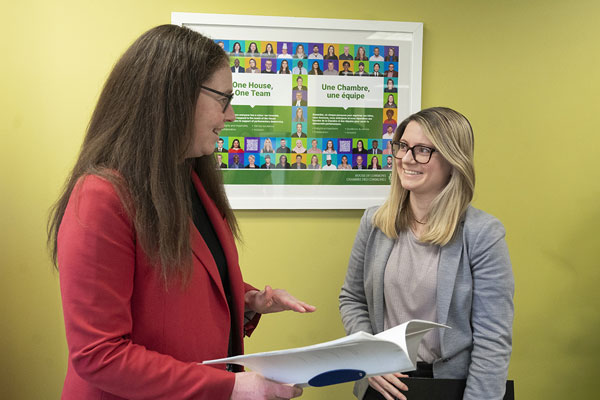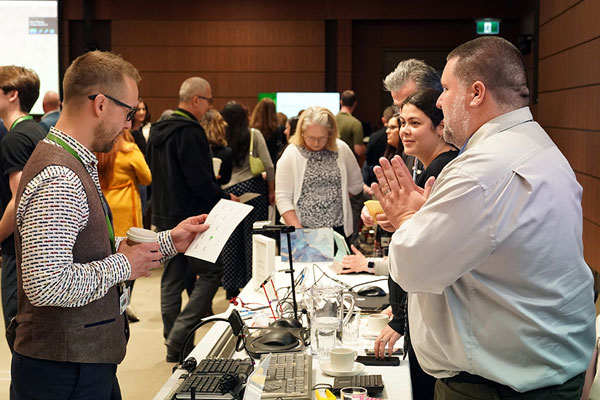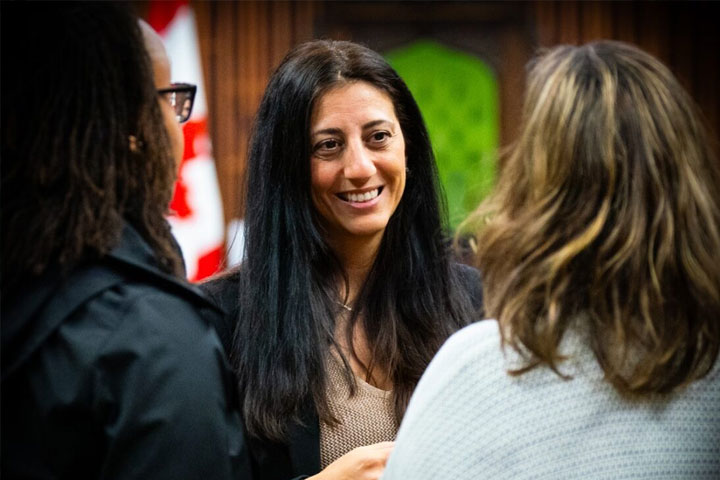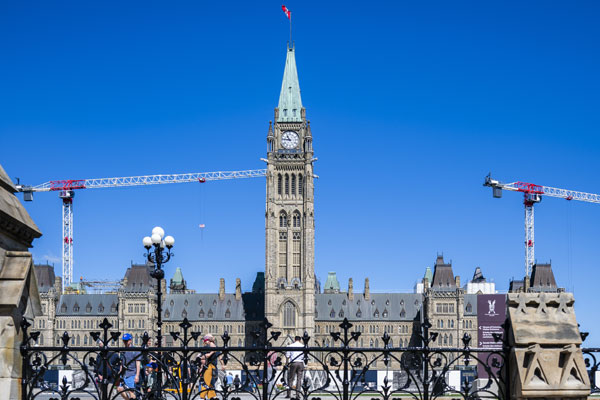Highlights from the Hill
The House of Commons Administration’s new vision of “One House, One Team” gave employees a common goal to work toward over the past year as they supported Members of Parliament and the House of Commons.
Developing a new strategic plan
The House Administration launched its new Strategic Plan 2023–2026 in April 2023. The plan sets out the organization’s priorities and direction and will guide decision making for the next three years.
It was important to the House Administration that employees be involved in the development of the strategic plan, and the organization gave them the chance to express themselves. Together, management and employees decided on how the Administration can keep improving as it carries out its mission.
The Strategic Plan 2023–2026 gives the House Administration a new vision statement, reinforces its mission and values, and updates the organization’s priorities and focus areas.

Recognizing and removing barriers
The House of Commons made progress in creating a more accessible environment since the launch of its Accessibility Plan 2023–2025. This year, the House carried out several projects in areas like training and information technology.
The House Administration organized events to raise awareness about accessibility and added tools and resources to its internal website. It also made the House of Commons’ public website more accessible. The Administration developed and offered two courses for Members, their employees, and its own employees: one on accessibility awareness and one on accessible customer service. The second course presents best practices for interacting with persons with disabilities.
The technical teams in charge of web development and maintenance received special training on accessibility. The House Administration hired experts with lived experience related to disability to examine the House of Commons’ public and internal websites and to make sure that they meet accessibility guidelines for the Web. The expert team identified issues, ranked them in order of priority, and started working on fixing them.
The House Administration also made the services offered through its contact centre more accessible to Members and their employees. For example, a single phone number now provides access to various types of services and the contact centre offers longer hours of service, in-person meetings, and a new web portal.

Building a more inclusive workplace
The House Administration remained dedicated to promoting a culture of inclusion. It encouraged employees at every level to actively participate in inclusive practices and behaviours. More than ever, the House helped its employees become effective change agents, contributing to a sense of belonging for all.
The Diversity Council, the Workplace Inclusion, Diversity and Equity team, and a growing number of employee-led groups worked together on events and on creating safe spaces for everyone to share, network, and build a diverse community. The employee-led groups include the Women’s Leadership Network, Social Abili-Tea group, the Black Employees Network, and the Indigenous Sharing Circle. The House hosted many diversity and inclusion events throughout the year, including a drag show to raise money for the Workplace Charitable Campaign. It also invited its employees to march for a second year in the Capital Pride Parade.
The House updated and expanded its self-identification questionnaire so that everyone is represented. Employees can choose to identify based on gender, sexuality, disability, Indigenous identity, race and ethnicity, language, and religion. The information provided is kept anonymous and confidential. The responses support the House Administration in making its services more inclusive.

“We want the House Administration to be a place where everyone has access to the resources they need and can fully take part. Having reliable data on the demographics of our workforce helps make this possible.”—Carolyne Evangelidis, Chief Human Resources Officer
Renovating the Parliament buildings: A consultative approach
The House of Commons continued to work with Public Services and Procurement Canada and other partners on the renovation of the Parliament buildings. The Centre Block project is the biggest and most complex heritage rehabilitation effort in the country. Meetings with the project team experts and the working group, composed of Members of Parliament from all recognized parties, help to ensure that the new spaces will meet the needs of parliamentarians, employees, and visitors. The working group’s recommendations for key project decisions are approved by the Board of Internal Economy, keeping in step with the project’s progress.
Because accessibility is an essential component of the project, the House consults groups who advocate for persons with disabilities on the design and development of the building. The goal is to find a balanced approach for accessibility, one that takes into account the heritage context, parliamentary workplace and security requirements so that the Parliament buildings can serve as a model for parliamentary buildings around the world.
